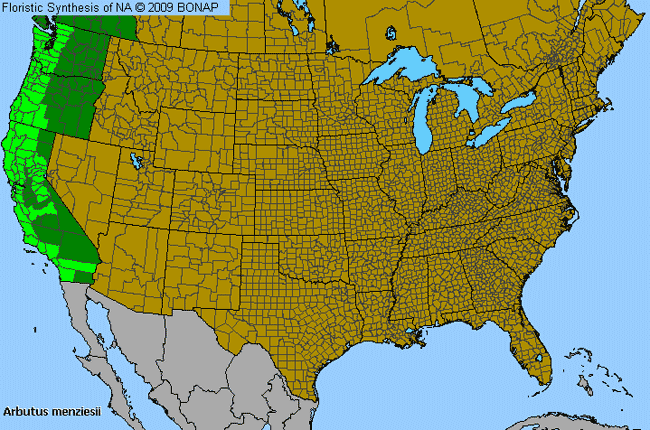Pacific Madrone (Arbutus menziesii)

Pacific Madrone Species Description

This species is native to North America north of Mexico.
Allergenicity: No allergy has been reported for Pacific Madrone (Arbutus menziesii) species.
Pollination: Occurs in following seasons depending on latitude and elevation: Winter to Spring.
Angiosperm - Flowering Dicot: Plants in this group have two embryonic leaves (dicotyledons). Examples of dicotyledons are beans, buttercups, oaks, sunflowers, etc.
Tree: A large plant, not exactly defined, but typically over four meters in height, a single trunk which grows in girth with age and branches (which also grow in circumference with age).
Weed: Any plant growing in cultivated ground to the injury of the crop or desired vegetation, or to the disfigurement of the place; an unsightly, useless, or injurious plant.
Perennial: Living for many years.
Woody Stem: Non-herbaceous. Lignified.
Evergreen: Retaining leaves throughout the year including changing seasons.
Pacific Madrone Species Usage

Honey/Bee Pollen: A plant used as a source of food for Honey Bees, and may be a flavor of honey such as clover or alfalfa.
Hummingbird Plant: A plant that is known to attract hummingbirds, usually brightly colored.
Butterfly Plant: A plant that is known to attract butterflies.
Related Links

More Pacific Madrone (Arbutus menziesii) imagesby Jessie M. Harris from BONAP










